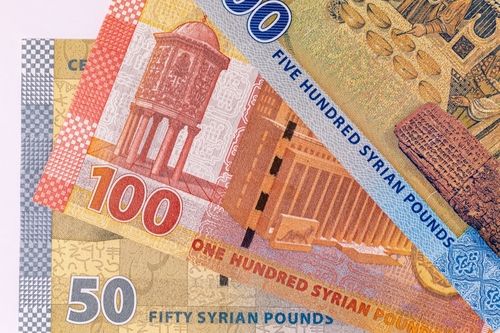The Syrian pound (SYP), often overlooked in global conversations about currencies, carries a history and significance shaped by decades of political, economic, and social changes. For those interested in international finance or keeping track of geopolitical developments, understanding the value and role of the Syrian pound provides a lens into Syria’s complex economic realities.
This blog post dives into the historical evolution of the Syrian pound, its current state, and the challenges and opportunities it faces.
What is the Syrian Pound?
The Syrian pound, also known as the lira (ليرة سورية), is the national currency of Syria, identified with the currency code SYP and symbol LS or £S in some cases. Originally introduced in 1919 during France’s control of Syria, it replaced the Ottoman lira as part of the region’s transition to the global monetary system post-World War I.
The pound has experienced significant fluctuations over the years, largely influenced by shifts in political regimes, regional conflicts, and global economic pressures.
A Brief History of the Syrian Pound
Pre-1947 Independence
Before Syria gained independence in 1946, the currency was pegged to the French franc, reflecting its colonial ties. This lasted until the mid-20th century when Syria began issuing its own banknotes, marking a new era of sovereignty in fiscal matters.
1950s – 1980s Growth and Turbulence
Following independence, the Syrian pound experienced moderate stability. However, by the 1960s, political strife and nationalization policies brought noticeable economic challenges. Export markets fluctuated, and the pound began to show signs of instability, particularly during the 1980s due to regional tensions and economic mismanagement.
Civil War and Economic Strains (2011 to Present)
Syria’s civil war, which started in 2011, caused unprecedented economic distress. The pound’s value plummeted due to hyperinflation, international sanctions, and the collapse of industries. Once trading at 47 SYP to the US dollar in early 2011, the pound has since faced staggering devaluation, with rates exceeding 14,000 SYP to $1 in 2023.
Factors Affecting the Syrian Pound Today
The Syrian pound’s present condition is shaped by a mix of internal and external factors that intersect to create its economic challenges.
Economic Sanctions
International sanctions targeting Syria heavily restrict its financial and trade flows, making it difficult for the country to stabilize its economy. These sanctions impact exports, foreign investment, and remittances, vital lifelines for many Syrians.
Hyperinflation
Rising inflation rates push up the cost of goods and services while eroding the Syrian pound’s purchasing power. Hyperinflation has caused significant hardship for ordinary citizens, who now face soaring prices for basic commodities like food, medicine, and fuel.
Reduced Production and Exports
With years of conflict eroding essential industries, Syria’s weakened export capacity has significantly shrunk the inflow of foreign currency. A limited pool of hard currency makes it almost impossible to prop up the SYP in global currency markets.
The Impact of the Syrian Pound’s Fluctuations
The devaluation of the Syrian pound is more than an economic challenge; it’s a pressing humanitarian crisis for millions.
- Reduced Import Power: The weakened SYP has made importing goods prohibitively expensive, leading to acute shortages of essential products.
- Rising Poverty: Declines in the pound’s value disproportionately affect low-income populations, driving poverty rates to drastic levels.
- Informal Economy: Many Syrians have turned to informal markets, further reducing trust and stability in formal financial institutions.
The Role of Remittances in Stabilizing the Syrian Economy
One of the key financial lifelines for Syrians comes in the form of remittances sent by Syrian nationals living abroad. Families often rely on money transfers as a crucial source of income. While transferring money into Syria is limited due to sanctions, many financial services work hard to ensure these transactions remain safe and cost-efficient.
Can the Syrian Pound Recover?
While the challenges facing the SYP are immense, experts point to a few potential paths for stabilization in the long term. These often require both internal policy changes and international cooperation.
- International Relief Efforts: Collaborative humanitarian aid and relaxed sanctions could alleviate immediate pressures.
- Currency Reform: Some economists suggest pegging the SYP to a stronger currency might stabilize short-term volatility.
- Trade and Infrastructure Development: Reviving industries and exports can strengthen the pound by increasing foreign currency inflows.
However, restoring trust in Syria’s financial and political systems would be paramount for any substantial economic recovery.
How Can Businesses and Individuals Navigate the Syrian Pound’s Challenges?
If you handle financial transactions with Syria or monitor global currencies for professional purposes, here are some ways to stay informed and adapt when dealing with the SYP.
- Stay Updated: Follow exchange rate trends from trusted sources like currency converters and international financial reports.
- Use Secure Channels for Transactions: Rely only on legitimate money transfer services to avoid fraud or exploitation.
- Plan Around Inflation: Expect short-term price volatility when dealing with SYP-denominated transactions.
FAQ
Why has the Syrian pound lost its value so drastically?
A combination of hyperinflation, international sanctions, reduced production capacity, and years of conflict has eroded the Syrian pound’s value.
What is the current exchange rate of the SYP to USD?
Exchange rates for the SYP to USD frequently fluctuate due to inflation and market instability. Check trusted currency conversion platforms for up-to-date rates.
Will the Syrian pound recover?
While recovery is possible, it depends on several factors, including improved governance, international relief, and infrastructure rebuilding.
